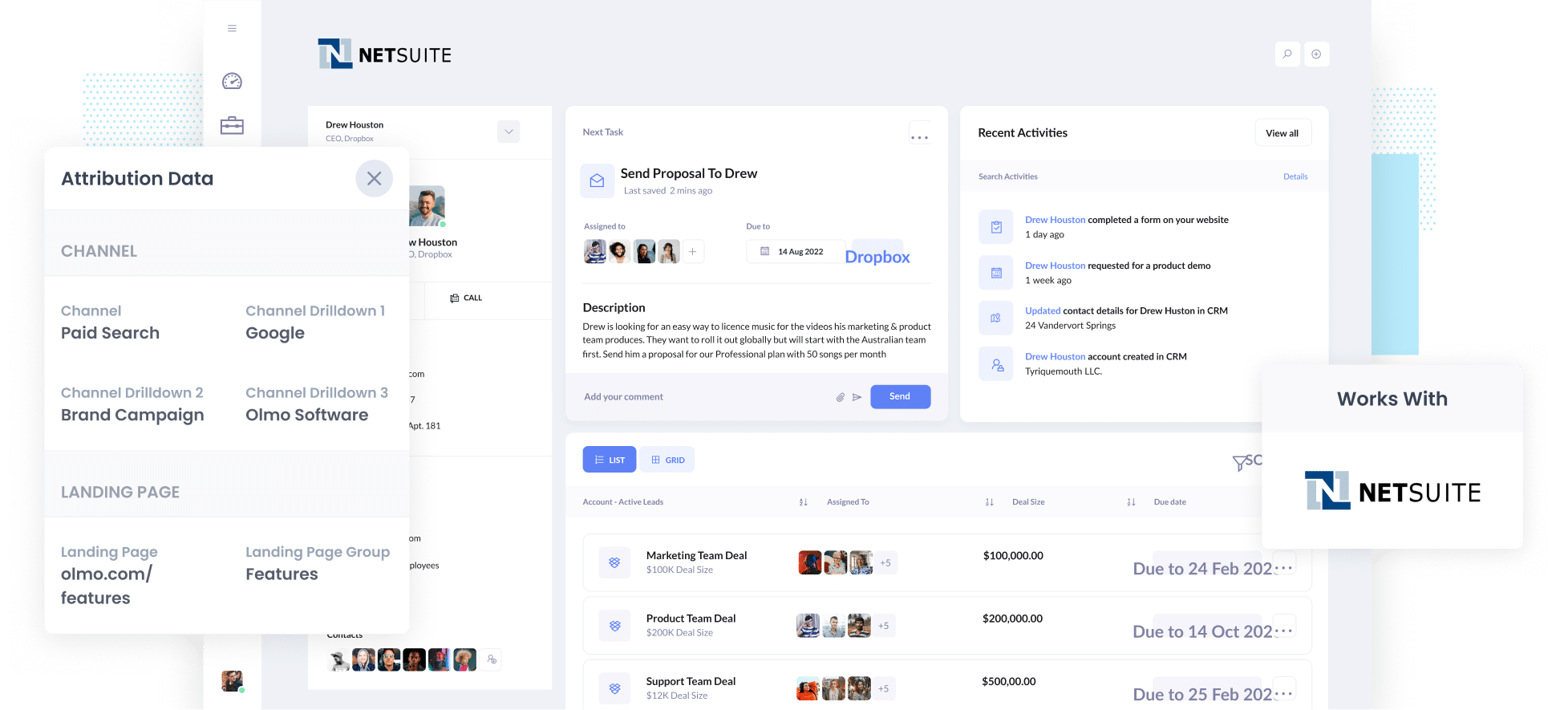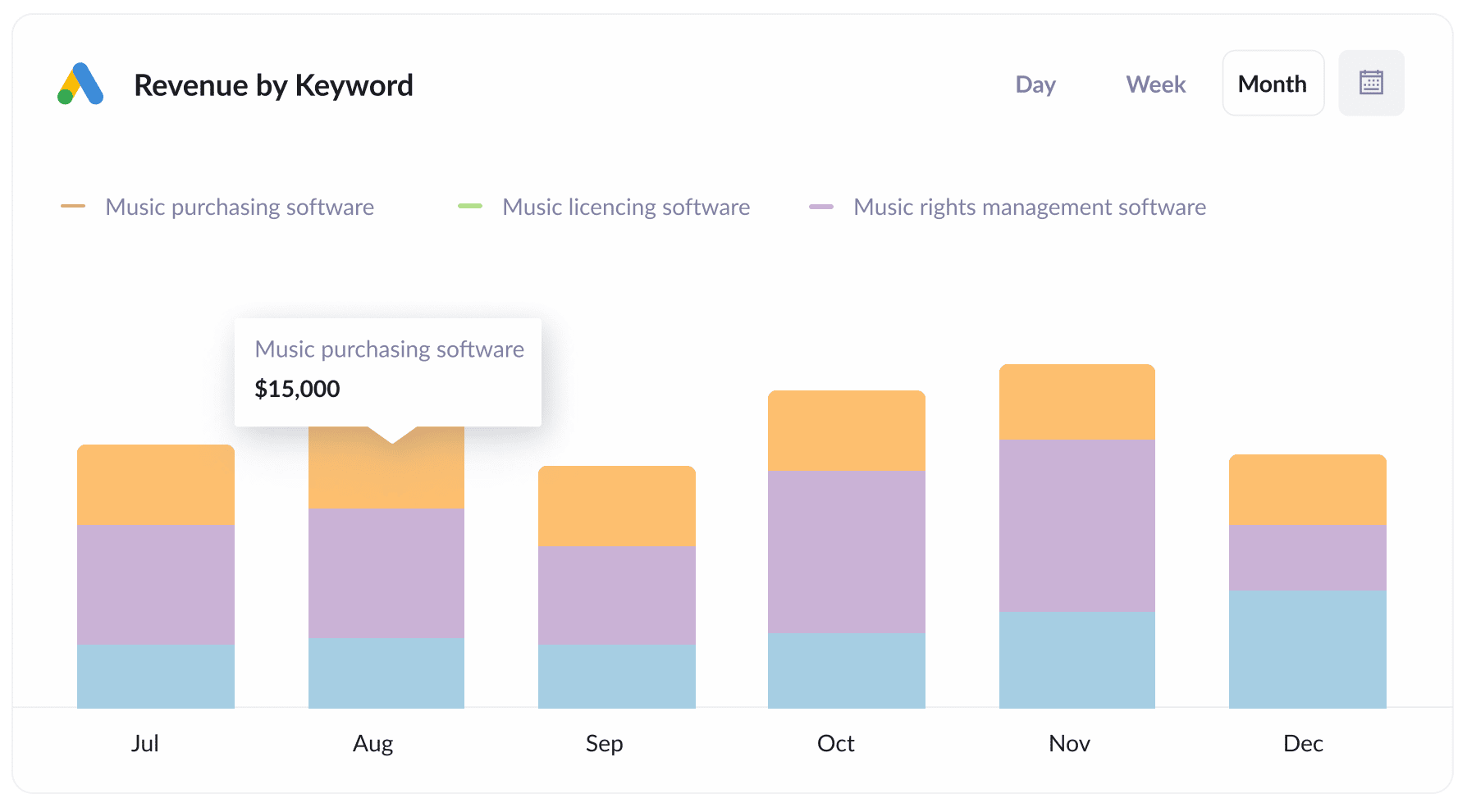The easiest way to get UTM parameters into Netsuite
Learn how to pass UTM parameters into Netsuite so you can run reports that show where all your leads & customers are coming from

Are you trying to find a way to track which marketing campaigns your leads & customers are coming from?
If so, you've come to the right place.
By capturing the UTM parameters you put behind your marketing campaigns and passing them into Netsuite alongside each lead, you can run reports that show you exactly what channels and campaigns are driving leads, customers & revenue.
In this article, we'll teach you how you can use a tool called Attributer to capture UTM parameters in Netsuite
4 steps for capturing UTM parameters in Netsuite
Using Attributer to capture UTM parameters in Netsuite is easy. Here's how to do it in 4 easy steps:
1. Install the Attributer code on your website

To get started, you first need to add the Attributer code to your website.
When you signup for a 14-day free trial, you'll get given a small snippet of code. Generally speaking, you can add this to your website directly (usually through the Settings section of your CMS) or you can use 3rd-party tools like Google Tag Manager to add it.
Full step-by-step instructions on how to add the code to your website can be seen here.
2. Add hidden fields to your forms

Next, you need to add some Hidden Fields to the forms on your website where you capture new leads. The hidden fields you need to add are:
- Channel
- Channel Drilldown 1
- Channel Drildown 2
- Channel Drilldown 3
- Landing Page
- Landing Page Group
Most form-building tools (like Gravity Forms, WP Forms, Typeform, Jotform, etc.) make it easy to add hidden fields. You simply drag and drop a 'hidden' field type into your form.
Full step-by-step instructions for adding the hidden fields in dozens of different form builders can be seen here.
3. Attributer automatically completes the hidden fields with UTM data

When a visitor arrives on your site from one of your ad campaigns, Attributer captures the UTM parameters and stores them in a cookie in the visitor's browser.
By doing so, Attributer ensures they are always available to be passed through when they submit a form, even if the person browses around your site or leaves and comes back.
Then when the visitor eventually completes a form on your site, Attributer writes the UTM parameters into the hidden field.
As an example, let's imagine I was a marketer at Oracle (Netsuite's parent company) and I was running some Google Ads to promote the Netsuite ERP.
If someone clicked my ads and completed a form, it would write the following information into the hidden fields (depending on what UTM parameters I used behind my ads):
- Channel = Paid Search
- Channel Drilldown 1 = Google
- Channel Drildown 2 = Brand Campaign
- Channel Drilldown 3 = Netsuite
On top of the values from the UTM parameters, it would also capture the visitor's first landing page (I.e. netsuite.com/features/erp) and the first landing page group (I.e. Features)
4. UTM parameters are passed into Netsuite

Finally, when the visitor submits the form on your website, all of the UTM parameters and the Landing Page data is passed into Netsuite alongside the information the lead entered into the from (such their name, email, phone, etc).
Once this data is inside Netsuite, you can then report on it using your existing reporting tools (I.e. Netsuite reports, or your existing BI tool).
You should be able to see what channels are bringing the most leads, what the conversion rate to Opportunity is, how many Closed Won deals have come from each channel, etc.
What is Attributer?
From the 4 steps above, you've likely got a bit of an idea of what Attributer does, but let's explain it a bit further.
Attributer is essentially a piece of code that you place on your website.
When a visitor arrives at your website, it looks at some technical things to determine where the visitor came from (the same things analytics software like Google Analytics looks at).
It then categorizes each visitor into a series of channels (like Paid Search, Paid Social, Organic Search, etc) and stores this as a cookie in the visitor's browser.
Then, when that visitor submits a lead form, it passes that Channel information (including the UTM parameters) along with the lead details into your Netsuite.
It was originally created by a marketing consultant who needed a way to track which channels and campaigns were actually producing leads & customers (as opposed to just generating website visitors, which is all that tools like Google Analytics can tell you).
I originally used it just for my consulting clients, but eventually realized it could be used by businesses everywhere.
Fast forward a few years and Attributer is used on thousands of websites and tracks over 7 million visitors to those websites every month.
Why using Attributer is better than capturing raw UTM parameters
There are other ways to capture UTM parameters and pass them into Netsuite, so why use Attributer?
Here's why:
1. Captures all traffic
Attributer doesn't just capture UTM parameters. It also captures marketing attribution information on visitors that some to your site through organic channels where UTM parameters aren't present (I.e. Organic Search, Organic Social, Referral, Direct, etc).
This means you'll be able to see the source of ALL your leads, not just those that come from the paid ad campaigns you placed UTM parameters behind.
2. Stores the data
Many other options for capturing UTM parameters in Netsuite require the UTM parameter to be in the URL on the page where the form is submitted.
This is a problem when the page a lead submits a form on isn't the same page they originally landed on.
To illustrate, imagine someone clicks one of your Google Ads and goes to your home page.
They then click the ‘Request A Quote’ button and are taken to your quote request page where they complete a form. This would mean that the page they complete the form on is not the same page they originally landed on, so the UTM parameters are lost.
Attributer solves this problem though. Because it stores the UTM parameters in a cookie in the user’s browser, they can be passed through with every lead regardless of what page they complete a form on.
2. Provides cleaner data
Most other options for capturing UTM parameters in Netsuite just capture them as is, which can often lead to messy data and inaccurate reports.
For instance, imagine some of your Facebook Ad campaigns are tagged with UTM_Source=Facebook (capitalized), others with UTM_Source=facebook (uncapitalized), and others with UTM_Source=fb.
If you were just to capture these raw UTM parameters, send them to Netsuite and try to run a report to see how many leads you got from Facebook Ads, these would look like 3 different sources and have to manually add them all up.
However, Attributer takes into account the possibility for these inconsistencies and will attribute a lead to the correct channel (Paid Social in the above example) regardless of capitalization and other inconsistencies.
3. Captures landing page data as well
Are you spending time and effort creating blogs and other content for your website in the hope of attracting new customers? Ever wanted to know how that's going?
Attributer not only captures UTM parameters and other channel data, but it also captures information like the landing page and landing page category, meaning you can see how many leads & customers you are getting from the content on your website (I.e. Your blog).
3 example reports you can run when you capture UTM parameters in Netsuite
The team at Attributer has been doing marketing & analytics for over 15 years, and over that time we've run a lot of reports to see where our leads & customers are coming from.
So to help you get started, here are 3 reports we've found useful in the past. All of these could be run in Netsuite (or another BI tool) if you use Attributer.
1. Leads by Channel

As mentioned before, Attributer tracks the source of ALL your leads,, not just those from paid ad campaigns.
As a result, you can create reports like the one shown above that show you how many leads you're getting each month by channel
This can help you identify the most effective channels for generating leads (beyond just paid ad campaigns) and help you prioritise your marketing budget and resources moving forward.
For example, if Organic Search is bringing in most of your leads but most of your budget is allocated to paid ads, it could be beneficial to reallocate some funds towards SEO.
2. Leads by Facebook Ads Network

If you've got ads running across Facebook's various networks (like Facebook, Instagram, Messenger, etc) then this report can help you understand what's working best.
Armed with this info, you can make informed decisions on which networks you should be investing in to help generate more leads.
3. Customers by Google Ads campaign

This report (which shows how many customers you're getting each month from your different Google Ads campaigns) helps you see which campaigns are actually bringing in customers (and subsequently which one's you should continue to invest in)
With this information, you can adjust your bids and budget to favour the campaigns that are working and ultimately get more leads & customers at a lower cost.
4. Revenue by Keyword

If you add the keyword to the UTM parameters in your Google Ads (which can be done with tracking templates), you'll be able to see the exact keywords your leads are using to discover your business and ultimately measure how much revenue you're getting from each keyword you are bidding on.
Wrap up
If you've been trying to find a way to track how many leads & customers you're getting from your various marketing campaigns, then Attributer is a great solution.
Not only will it capture and pass UTM parameters into Netsuite, but it will also give you data on leads that come from channels where UTM's aren't present, such as Organic Search, Organic Social, Referral, etc.
Best of all, it's free to get started, so start your 14-day free trial today and see what it can do for you!
Get Started For Free
Start your 14-day free trial of Attributer today!

About the Author
Aaron Beashel is the founder of Attributer and has over 15 years of experience in marketing & analytics. He is a recognized expert in the subject and has written articles for leading websites such as Hubspot, Zapier, Search Engine Journal, Buffer, Unbounce & more. Learn more about Aaron here.
